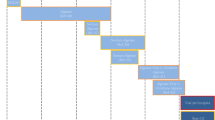Abstract
A number of investigations have pursued the feasibility of a bioartificial endocrine pancreas (Bio-AEP) in which pancreatic endocrine cells (PE-cells) are encapsulated within a semipermeable membrane to protect them from immunological rejection. The goal of PE-cell transplantation in human diabetes is to maintain the PE-cell graft in the recipient without the use of immunosuppression. One approach is to encapsulate the donor PE-cells in a semipermeable membrane. A type of diffusion chamber for a Bio-AEP is described. The system is based on a chamber designed to improve the diffusion of insulin secretion in response to glucose transfer across a membrane. An implantable diffusion chamber for the Bio-AEP was constructed by placing PE-cells in agarose, containing nicotinamide and a sugar-chain coated polymer, in a ring holder which was sandwiched between two nucleopore membranes (pore size 0.1 μm), for transplantation into diabetic animals. This compatible diffusion chamber prevented rejection, and maintained normoglycemia in diabetic rats when implanted intraperitoneally.
Similar content being viewed by others
Author information
Authors and Affiliations
Additional information
Received: December 4, 1999 / Accepted: April 11, 2000
About this article
Cite this article
Ohgawara, H. Strategies for immunoisolation in islet transplantation: challenges for the twenty-first century. J Hep Bil Pancr Surg 7, 374–379 (2000). https://doi.org/10.1007/s005340070032
Issue Date:
DOI: https://doi.org/10.1007/s005340070032




